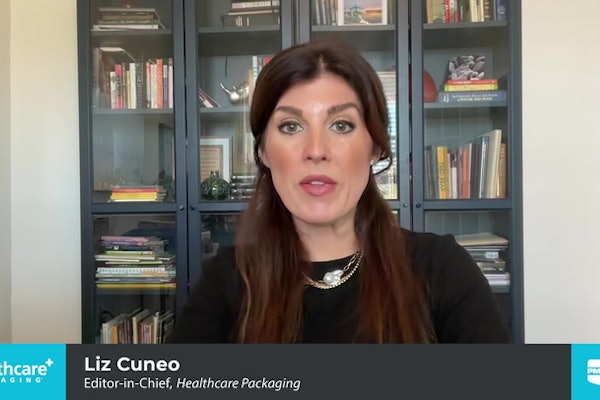Here are a few insights into enterprise-wide integration from Jim Ricigliano, Manufacturing Execution System associate director at pharma manufacturer Wyeth, which recently completed a multisite electronic MES development project. Ricigliano's comments, delivered during a panel discussion at the Manufacturing Perspectives 2004 conference at the Rockwell Automation Fair, apply to both processing and packaging equipment.
• If the plant floor and high-level business systems are tightly linked, you have to be disciplined about how you plan and schedule. In the old days, if you failed to execute an order, you could adjust on the plant floor. But if your manufacturing and business information systems are tightly integrated, you may have to take a different approach to these kinds of adjustments.
• To integrate across the enterprise, you need senior folks behind the initiative. You have to show them what they'll get in return, and one big thing they'll get is visibility. For example, determining why product sat in a plant from Monday to Friday can be a tall order in a traditional pen-and-paper-based system. It's not as tough in a system based on PCs, sensors, and automation tools. Knowing where to apply change becomes much easier.
• Moving from a paper batch record to an electronic one is a big change. At Wyeth, the senior workforce had to make a big adjustment in moving from paper and pencil to scanner and mouse. Nearly half the staff had to go through PC training. But this was an important part of the process. They had to arrive at a comfort level.
• Operations are greatly improved when you go from a paper-based system to an electronic one, so getting product to market is easier. As soon as you make product, it's sold. Moving materials through the plant quickly and efficiently is important in any manufacturing environment. But when you're talking about active ingredients that cost as much as they do in Wyeth's business, it's huge.
• Before implementing anything, reach clear definitions of what is meant by ERP, MES, and SCADA. Clarity is important because the idea is to build once and deploy many times.
--By Patrick Reynolds, Editor, Packaging World
• If the plant floor and high-level business systems are tightly linked, you have to be disciplined about how you plan and schedule. In the old days, if you failed to execute an order, you could adjust on the plant floor. But if your manufacturing and business information systems are tightly integrated, you may have to take a different approach to these kinds of adjustments.
• To integrate across the enterprise, you need senior folks behind the initiative. You have to show them what they'll get in return, and one big thing they'll get is visibility. For example, determining why product sat in a plant from Monday to Friday can be a tall order in a traditional pen-and-paper-based system. It's not as tough in a system based on PCs, sensors, and automation tools. Knowing where to apply change becomes much easier.
• Moving from a paper batch record to an electronic one is a big change. At Wyeth, the senior workforce had to make a big adjustment in moving from paper and pencil to scanner and mouse. Nearly half the staff had to go through PC training. But this was an important part of the process. They had to arrive at a comfort level.
• Operations are greatly improved when you go from a paper-based system to an electronic one, so getting product to market is easier. As soon as you make product, it's sold. Moving materials through the plant quickly and efficiently is important in any manufacturing environment. But when you're talking about active ingredients that cost as much as they do in Wyeth's business, it's huge.
• Before implementing anything, reach clear definitions of what is meant by ERP, MES, and SCADA. Clarity is important because the idea is to build once and deploy many times.
--By Patrick Reynolds, Editor, Packaging World



















